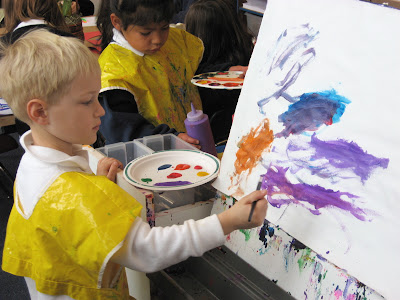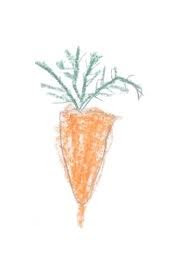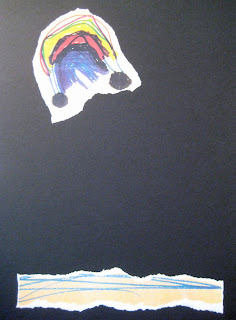 | ||
| the little girl on the right hands a pouring cup to her friend at the water table. |
Kindness begins so early.
Friendship begins so early.
Sharing.
Patience.
Connecting.
Give and Take.
It can happen in a brief lovely moment, especially when you are living the very young life of a two-year-old. Sometimes, you are just enjoying a sunny day and you need some water...
 | ||
| The friend on the left has received the pouring cup from his friend in the hat. |
 | |||||||
| Hmm...had the boy offered water? OR had the girl started with the motive of getting water? |
Educators and cameras cannot always Capture Friendship in the exact moment it is happening.
This was a moment that really struck me because these two children only came to school a couple days a week, and this was taken early on in the school year. Perhaps they had a previous connection, yet I don't know that for certain.
The cognitive process for both children to engage in this exchange was quite lovely to witness: The girl intentionally gave the boy the measuring/pouring cup.
In the first photo, it was difficult to see that the girl was holding a watering can, so we could have thought the giving of the pouring cup was a sweet gesture.
The second photo, we see the boy holding the pouring cup and perhaps seeing that the girl had a watering can.
The third photo, could be read as the girl having had motive to have the watering can filled OR the boy having seen that the girl had a watering can and he decided to offer water to her.
The whole exchange had no words to document.
Between the two children, there must have been something else they were understanding together, only between them, in the language of two-year-olds that usually relies a lot on eyes and hands.
In YOUR classroom or outside at your school...
if you look close, daily, you will SEE friendship happening in many forms. It might SOUND like friendship, it might FEEL like friendship, it might MOVE like friendship. Get your camera ready, have it with you always. You never know where friendship will show up, yet when you are around children you can't help but to discover it.
Look for it. Capture it. Share it.
















































